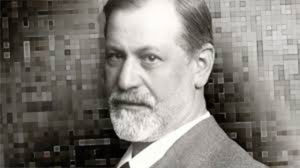This article illustrates by means of a case study how the clinical picture of established pathological mourning may underly an obsessive-compulsive personality disorder and a false self functioning. The theories of Freud, Klein and Volkan on pathological mourning are reviewed. In the course of the discussion some reflections on shifts in the countertransference, the unlocking of frozen objects and the role of introjection in an Oedipal struggle are presented.
News
Gefixeerde pathologische rouw
This article illustrates by means of a case study how the clinical picture of established pathological mourning may underly an obsessive-compulsive personality disorder and a false self functioning. The theories of Freud, Klein and Volkan on pathological mourning are reviewed. In the course of the discussion some reflections on shifts in the countertransference, the unlocking of frozen objects and the role of introjection in an Oedipal struggle are presented.
Beschouwingen over regressie op afdelingsniveau
This article illustrates how the psychiatrist can recognize the beginning of regression in a psychiatric service. A psychoanalytic training can help to detect the first symptoms rapidly.
A bad work climate may be caused by regression of the task group to ‘basic assumption groups’ and to the unstructured large group. This clinical experience has been related to the work of Kernberg (1998) and Bion.
Beschouwingen over regressie op afdelingsniveau
This article illustrates how the psychiatrist can recognize the beginning of regression in a psychiatric service. A psychoanalytic training can help to detect the first symptoms rapidly.
A bad work climate may be caused by regression of the task group to ‘basic assumption groups’ and to the unstructured large group. This clinical experience has been related to the work of Kernberg (1998) and Bion.
Psychoanalytische en psychiatrische diagnostiek bij persoonlijkheidsstoornissen
A theoretical frame of reference for the psychoanalytical diagnosis for personality disorders is described, making it possible to place personality disorders on a spectrum between neurosis and psychosis. The application of this frame of reference to the descriptive categories of the DSM-IV Axis II achieves a double goal. From a psychoanalytical point of view, the different external appearances of a similar intrapsychic functioning become clear. From a psychiatric point of view, the description of the psychodynamic functioning behind the different DSM-IV Axis II categories adds depth to the descriptive approach.
Psychoanalytische en psychiatrische diagnostiek bij persoonlijkheidsstoornissen
A theoretical frame of reference for the psychoanalytical diagnosis for personality disorders is described, making it possible to place personality disorders on a spectrum between neurosis and psychosis. The application of this frame of reference to the descriptive categories of the DSM-IV Axis II achieves a double goal. From a psychoanalytical point of view, the different external appearances of a similar intrapsychic functioning become clear. From a psychiatric point of view, the description of the psychodynamic functioning behind the different DSM-IV Axis II categories adds depth to the descriptive approach.
Beschouwingen over het grensbegrip in psychoanalytische psychotherapie
This article presents a review of the literature concerning the concept of boundaries of the mind. The concept is defined and its major characteristics described as thickness, elasticity, permeability and flexibility. Three case reports are presented that highlight the possibilities of change to the boundaries of the mind during the psychoanalytic process. Countertransference enactments can be understood because of their effect on the psychoanalytic frame. The possibility of regulating one’s boundaries is a major component of inner freedom.
Beschouwingen over het grensbegrip in psychoanalytische psychotherapie
This article presents a review of the literature concerning the concept of boundaries of the mind. The concept is defined and its major characteristics described as thickness, elasticity, permeability and flexibility. Three case reports are presented that highlight the possibilities of change to the boundaries of the mind during the psychoanalytic process. Countertransference enactments can be understood because of their effect on the psychoanalytic frame. The possibility of regulating one’s boundaries is a major component of inner freedom.
Het Oedipuscomplex als rationele verklaring bij D.H. Lawrence
D.H. Lawrence’s autobiographical novel Sons and lovers gives a striking representation of the various elements of the Oedipus complex. By writing this novel Lawrence tried to elucidate the personal problems (a consuming mother fixation and repeatedly failing relationships with girls) he experienced at the time. His future wife Frieda initiated him in Freudian theory, within which he found the scheme to undertake in a conscious, rational way a comprehensive explanation of his difficulties. In his later metapsychological essays Lawrence denies the existence of infantile sexual drives, and he defines the Oedipus complex, reduced to the incest motive, as a logical deduction, a rational conclusion by the adult being faced with partner relationship problems related to a mother fixation. Thus Lawrence raised his procedure of representing the Oedipus complex as a rational interpretation of his problems to the status of a general definition of the incest motive.
Het Oedipuscomplex als rationele verklaring bij D.H. Lawrence
D.H. Lawrence’s autobiographical novel Sons and lovers gives a striking representation of the various elements of the Oedipus complex. By writing this novel Lawrence tried to elucidate the personal problems (a consuming mother fixation and repeatedly failing relationships with girls) he experienced at the time. His future wife Frieda initiated him in Freudian theory, within which he found the scheme to undertake in a conscious, rational way a comprehensive explanation of his difficulties. In his later metapsychological essays Lawrence denies the existence of infantile sexual drives, and he defines the Oedipus complex, reduced to the incest motive, as a logical deduction, a rational conclusion by the adult being faced with partner relationship problems related to a mother fixation. Thus Lawrence raised his procedure of representing the Oedipus complex as a rational interpretation of his problems to the status of a general definition of the incest motive.





